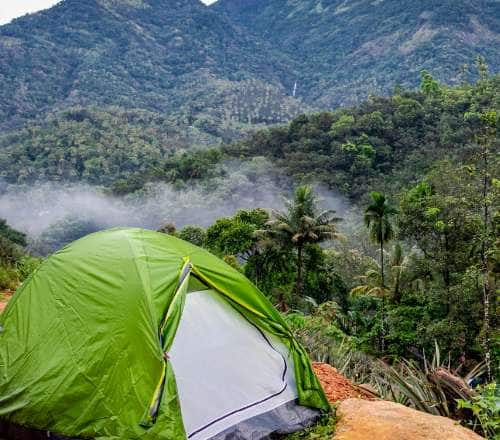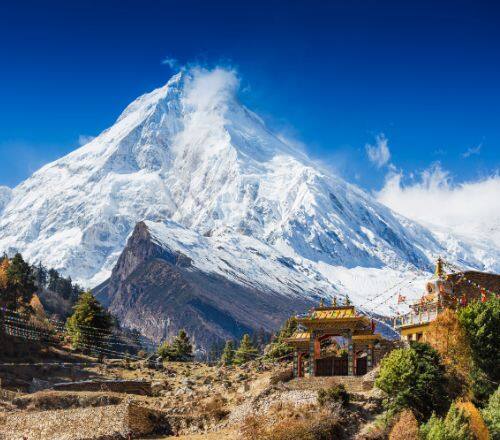Stay logged in to proceed with bookings, orders and offers.
On changing the terminal, you will loose items in your cart. Are you sure you want to change your terminal?
I found myself gaping with a child-like fascination at everything I crossed—ancient mud formations, doddery iron bridges, and settlements that looked like a sprinkle of mudhouses in an ocean of brown mountains.
A 1000-year-old monastery, 200-million-year-old fossils, and a landscape seeped in stories of everything that has unfolded in between. In my eyes, Spiti Valley is a true depiction of the ancient, mighty, and enchanting Himalayas. To explore it, you will have to take a step back in time. While entering Spiti, with glaciers on my right, it was difficult to do more than bat my eye. As soon as the minibus crossed the diversion to Chandra Tal, I found myself gaping with a child-like fascination at everything I saw.
Before I knew it, I was in the cinematic little town of Kaza—the beating heart of the valley—located on a cliff by the Spiti River. Unlike destinations that gradually reveal their charm, Kaza overwhelms you with its grandeur from the very first encounter. You immediately start experiencing the thinning of air. As you cast your gaze around, the towering, snow-draped mountains dominate your field of vision, and the invigorating chill in the air serves as a constant reminder of the Himalayas' formidable presence. While spending two weeks in the valley, I came to a realisation. While Kaza and its neighbouring villages bask in the spotlight, there exists a multitude of hidden villages within Spiti that remain relatively unexplored and uncelebrated.
I encountered the first hidden village on my third day in Spiti Valley. After a riveting journey across the triplet villages of Hikkim, Komic, and Langza, I decided to extend the adventure to a fourth and farther village, Demul, to finish the circuit. This place was recommended by a local staff member from Zostel Kaza. The first stop was over a few kilometres from the village, where a sharp turn unlocked an entirely different landscape. The surrounding barren mountains were replaced by a cove of light and dark green fields, shining golden under sunlight. And in between them were a cluster of houses, all painted white and crimson with dashes of blue. Walking in Demul is like traversing through the 1800s. This isn’t a place you go to with a bucket list of experiences to check off. However, you can always chat with the locals and spot dung-plastered courtyards—its walls made by stacking rocks and berry-laden trees. You can also observe the dried-up haystack decorating the mudhouse terraces that serve as winter fodder for cattle. There was one shop—the only one—selling household items, I assumed. After a short tryst with the village kids and a cow, I made my way to the rental taxi. The sun was setting, and the journey back to Kaza was over an hour long.
One hour into the drive from Kaza to Tabo, I came across a metal bridge on my right, which took me to the twin villages of Mane. After a few steep turns on an inclined road, I reached Manegogma or Lower Mane, a village settled entirely on a slopey landscape. If you continue driving on the road, you will find another village—Maneyogma or Upper Mane. I reached Mane Yogma during the early hours of the afternoon, and after some quick scouting, I was able to find one functional homestay that was hosting travellers for the season. I was quick to check-in and gulp down a delicious home-cooked lunch of potato pea momos and clear soup. At Mane Yogma, you can look forward to a hike up to the shepherd’s camp. The trail crosses through a narrow crevice over the Spiti River. Here stood a lone, fenced house with a sparkling green field in its front yard and beautiful views of the Himalayas. Before I embarked on the hike, I received the classic advice: "Just stick to the trail—it's quite straightforward." However, that didn't quite go as planned. Left to navigate a path seldom taken, I found myself off course. Despite my efforts to rediscover the trail for around an hour, the sun was descending, and so was my morale. I decided to make my way back. And following the same route, I reached the homestay just before sunset. If you make it to Mane and decide to do the hike, I recommend that you do it with a local or at least in a group.
A few days later, on my way from Dhankar back to Kaza, I decided to hitchhike to the obscure village of Lhalung. A friend who had explored Spiti extensively had suggested that I check out the monastery here, but upon my arrival, I found the doors locked. After asking around, I managed to get a hold of the gentleman in charge of the monastery, and requested him to open the doors for a short while. When I stepped in, I was blown away by what I saw. Lhalung’s unassuming little monastery, which occupies only a few square metres, doubles as a storehouse for some impeccable Buddhist sculptures and murals. When here, pay your respects to the idol of Goddess Tara, seated in the centre, and pray for some light to seep into the dingy monastery so that you can have a good look at the embellishments that cover it. But be careful to not use a flashlight, as any kind of light (natural or artificial) will compromise the sanctity of the murals. Follow the monastery visit with a quick walk through the village. If you find a jolly local along the way, learn about about the difference in how they lead their lives during summer versus winter. I have come back with stories that I narrate every time I talk about the villages in Spiti.
The easy but expensive answer is hiring a taxi. During my stay at Zostel Kaza, I was able to find two travellers, and together we took a shared cab to the popular circuits of Key and Chicham and Hikkim-Komic-Langza (with Demul). For the rest of my journey across the region, I hitchhiked. It was easy for me to hitch a ride to most places, except for Mane, where I could only find two tourists during my two-day stay. If hitchhiking is not for you, try renting a motorbike from Kaza or opt for local buses that run only once a day to most of these villages (they return the next day). Part of me wishes that these villages stay remote forever, but even if that isn’t possible, I do hope that whoever explores them does so responsibly. If you ever make it to these remote locations, please take care of the environment. Respect the religious sentiments and the lifestyle of the locals and refrain from littering. A little goes a long way.





The Adani One expressly disclaims all liability, direct and indirect, in respect to actions taken or not taken based on any or all the contents of this Blog. The Blog is an opinion of the contributor based on the collation of data from various sources and is provided only for information purpose. Adani One does not canvass, advertise, solicit, invite or induct for any product, merchandise, information, brand or any other materials mentioned in the Blog, nor does it obtain any monetary benefit from the same. Reader is advised to read and apply his/her intellect and discretion in this regard. Any Intellectual Property mentioned in this blog belongs to the rightful owner. We do not intent to claim any interest over the same.